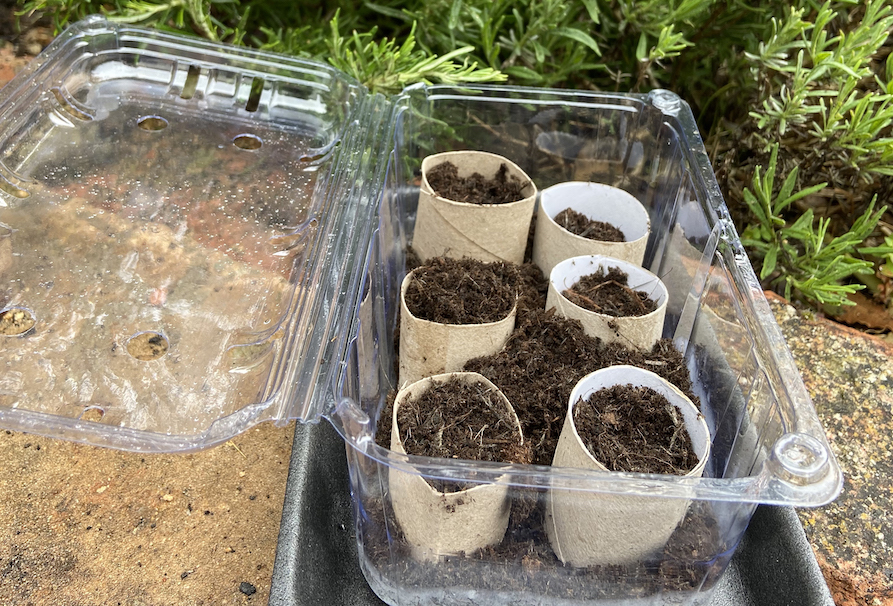10 ways to recycle old junk to use in the garden
It’s great news that garden centres have been able to reopen, but if you’re on a tight budget, don’t forget the items you already have on hand that you can recycle as pots, cloches and cane-toppers. There’s a myriad uses for plastic bottles, cans, jars, loo roll and corks, which will save you plenty of money in the long run.
Which? Gardening (gardening.which.co.uk/hc/en-gb), the Consumers’ Association magazine, reports 83% of its members have reused items rather than send them to landfill. The most popular were woody prunings as plant supports, plastic bottles for watering, and paths made out of old bricks. Almost a third have used a bucket as a planter and a quarter use old tights as plant ties.
So, what else can you do? Here are 10 ideas:
1. Make the most of old furniture

Old drawers can be converted into containers
You can make large planters out of everything from old drawers to baths, sinks and toilets. Some people use wheelbarrows, chimney pots and car tyres to display their plants.
For people with smaller plots, re-use old cans, drilling drainage holes in the bottom, and paint them in colours of your choice, before planting them up with colourful plants. You could also use wellies, teapots and other old containers as plant pots.
2. Make your own watering can

Home-made watering cans are ideal for smaller plots
Home-made watering cans are ideal for smaller pots and indoor plants, says award-winning garden designer Joe Perkins. “Using a small drill bit, start by drilling holes into the lid of a large plastic bottle. Make sure you hold the lid in place securely using a workbench or something similar to support it. And that’s it! You have a very useful watering can with a fine spray,” he advises.
“They can be used for seed trays, more specifically salad crops, as they’re ideal when space is tight, or if you’re growing on a windowsill or balcony.”
3. Be adventurous with plant supports

Use twigs as plant supports
As well as using long twigs from prunings, gardeners have also supported plants with old tent poles, climbing frames and even scaffold poles, Which? Gardening found.
4. Use old corks as cane toppers

Corks make good cane toppers
Instead of buying plastic tops for canes, save the corks from your wine bottles and use those instead. Just create a small groove in the cork at one end and press it hard on to the cane.
5. Deter pests with recycled homeware
Don’t chuck your old net curtains – they will protect your crops against carrot fly. If you have a pond and you want to discourage herons, fish out your old CDs and attach them with string to a line that runs over the pond. The reflection and movement of the CDs should keep birds at bay.
6. Create a mini greenhouse cloche

Cut the bottom off a plastic bottle to make a cloche
Perkins suggests: “A mini cloche is perfect for protecting newly planted seedlings from dangers like the wind, as well as slugs and snails.”
Take a two litre or five litre bottle and simply cut off the bottom, pop it into the pot and there you have it, your new little pride and joy is safe for another day.
7. Be adventurous with kitchen items

Use old lolly sticks as plant labels
Gardeners use the end of wooden spoons as dibbers, carving knives for weeding, colanders as hanging baskets and cups and mugs as pots, Which? Gardening research found. Think outside the box and old cutlery and crockery can find its place in the garden. And don’t forget lolly sticks, which can become useful plant labels.
8. Cut up old socks to use as soft ties for planting
While clearing out your drawers, you may have spotted rogue socks without a matching pair. Why not put them to good use and cut the socks into strips? They’re great soft ties for things like climbers, tomato plants and raspberries, which need support from canes, Perkins suggests.
9. Use loo rolls and plastic fruit punnets

Make the most of old plastic fruit punnets and loo rolls
You can start seedlings off from toilet roll tubes and you won’t need to remove the cardboard when planting them out as it will biodegrade quickly, Perkins says. Put the tubes into old plastic fruit containers. They make great seed starter trays as they already have drainage holes and a lid to protect them, he advises.
10. Create a compost scoop

Scoop compost with a recycled milk bottle
Old plastic milk bottles or detergent containers (anything with a handle) can be converted into compost scoops by cutting just below the handle and downwards, creating a scooping shape, notes Perkins.
The Press Association
Latest posts by The Press Association (see all)
- Best places to see bluebells this spring - April 11, 2025
- 6 foods that are great for your heart health - April 8, 2025
- Award-winning actors to star in Second World War film released for VE Day - April 8, 2025
- King Charles and Queen Camilla release official 20th wedding anniversary photographs - April 7, 2025
- The 5 ways drinking alcohol can affect your body - April 7, 2025




















